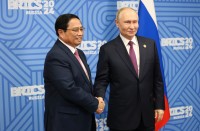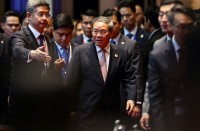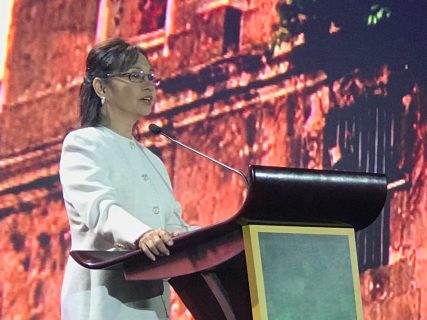
By Caesar Vallejos, EBC Correspondent
Technology and artificial intelligence will drive the next 50 years of the Association of Southeast Asian Nations (ASEAN).
“When we ponder the next 50 years, we see increasing prosperity driven by technology and artificial intelligence,” former President Gloria Macapagal-Arroyo said at the recently concluded ASEAN Business and Investment Summit 2017.
After celebrating its golden years in the Philippines, the ASEAN has left an imprint being undoubtedly one of the world’s recognized economic blocs in the minds of the most powerful global leaders, especially with the resounding success of the 31st ASEAN Summit and Related Summits held in Manila.
READ the reactions to how the Philippines hosted ASEAN Summit here.
What’s next after ASEAN50?
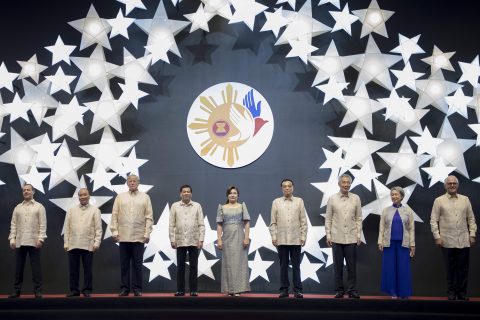
“The world in the next 50 years is still a world and even more a world of great technological advancement and artificial intelligence. In such a world, the way to reduce income disparity is to create jobs not destroy them by isolating ourselves and refusing to go with the flow of technology,” she stressed.
She added seeing “a more peaceful world overall, but we see more nations with more nuclear capability and attempts at terrorism” and a “cleaner environment…but global warming will continue to affect government policy on our economic model and our lives,” she predicted.
She recalled that when she was President, “we were so happy that the farmers could bid, could catch up on what the prices are by looking at their cellphones but today, like in China, farmers get paid by WeChat and even beggars receive their alms by WeChat,” the former president narrated.
She stressed that micro-, small- and medium enterprises (MSMEs) “must be introduced to financial and marketing technologies, something like Paypal, Uber or AirBnB on a smaller scale.”
According to Arroyo, we must continue to attract investments from within and outside the ASEAN region. ASEAN integration provides more opportunity for more foreign investments due to the region’s large market.
“Efficient infrastructure is both physical and digital. ASEAN has a connectivity plan to facilitate the transfer of goods and people across the region. That requires infrastructure financing,” the former president said.
To get the financing that it needs, Arroyo suggested that there is a need to find creative ways to mobilize the combined foreign exchange assets of ASEAN pegged at a trillion dollars for infrastructure and connectivity.
“If we are 650 million (people in ASEAN) today, there will be over a billion in 50 years. If we are the fastest growing region in the world today, in 50 years, we will be likely a mature, more modest growth region,” Arroyo predicted.
Philippine competitive advantage
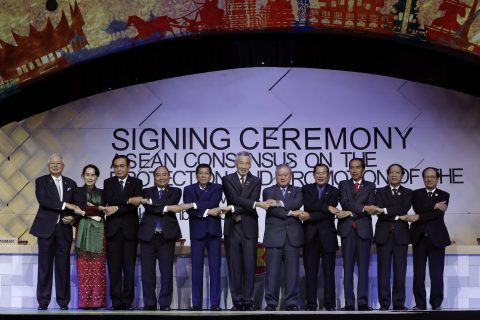 “I never felt threatened by skilled technology workers coming here and putting our own BPO workers and managers out of jobs,” she said.
“I never felt threatened by skilled technology workers coming here and putting our own BPO workers and managers out of jobs,” she said.
“In fact, our BPO workers, out IT workers, technology workers are pirated by other countries outside ASEAN and inside ASEAN,” she said. “It is not issue about locals but an issue about the distortion of the labor market,” she clarified. She noted that solution is to produce and train more workers such as knowledge workers and nurses whenever the market demands it.
The Philippines must keep playing on “our use of our competitive strengths – an educated and skilled labor, top-notch management, Information Technology- enabled services plus mineral resources and an attractive expat living standards.
China: not a competitor but a collaborator
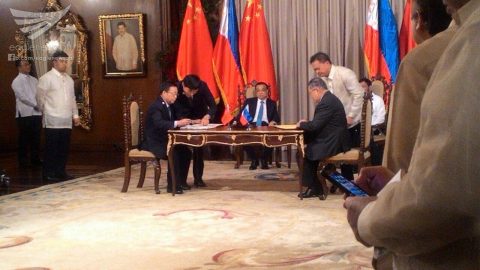 Arroyo narrated that a security concern led five foreign ministers to put ASEAN together. “Did we ever think that it would blossom into an economic community today? Arroyo asked.
Arroyo narrated that a security concern led five foreign ministers to put ASEAN together. “Did we ever think that it would blossom into an economic community today? Arroyo asked.
50 years ago, China was a sleeping economic dragon but today China it is now the second largest economy in the world.
“Everybody thought that the China will become a competitor. We did not predict that China was a class on its own. And today we see that China is not a business competitor. It is a collaborator. It is a donor. It is a market,” Arroyo emphasized.
She added that “like China, nobody predicted then that the ASEAN will become a zone of peace and economic community.”
From obscurity to global leadership
In the early 1980s, Arroyo narrated that ASEAN was beginning to emerge from an “obscure regional grouping into one that is associated with success as its individual member economies were growing very fast, although that has never to with ASEAN as a whole.”
ASEAN also began to have a bigger leadership in the region by trying to find a solution to the Cambodian conflict then. According to Arroyo, every year in the United Nations (UN), ASEAN successfully campaigned that the Khmer Rouge kept its seat and not Kampuchea in the UN.
ASEAN has kept the peace, expand our economies and drawn closer together through trade, diplomacy, culture and exchange and greater connectivity.
“We are diverse, multi-racial, multi-religious region with different levels of social and economic development,” she described.
“Different religions is remarkable at ASEAN that resisted the temptation to drift apart, instead we remain on a steady arch of committee cooperation and community,” Arroyo cited.
The outcome of income disparity
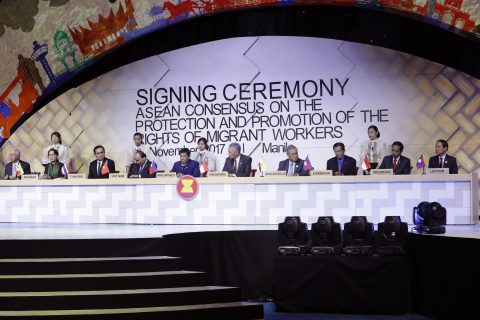 Arroyo said that income disparity constitutes the paramount challenge for both development and globalization as stressed by President Duterte at the APEC Summit.
Arroyo said that income disparity constitutes the paramount challenge for both development and globalization as stressed by President Duterte at the APEC Summit.
“If huge sectors of a country and a community of nations are left behind by progress, then these disadvantaged sectors and states will reject development and globalization paradigms and embrace alternatives often isolationist and sometimes extremist and violent ideologies,” Arroyo warned.
“So for open economies and free enterprise to win, everyone must win,” she said.
Only 8 years away from full integration
The former president reminded that the ASEAN crafted a Vision of 2025, a highly connected and cohesive with enhanced connectivity at the center of cooperation and a more resilient, inclusive people-oriented, people-centered community integrated with the global economy.
“If we achieve our vision in 8 years, we have a great chance of being a global force in 50 years but if we cannot even achieve that vision in 2025, we will have an uphill battle to be central 20 years from now,” she said.
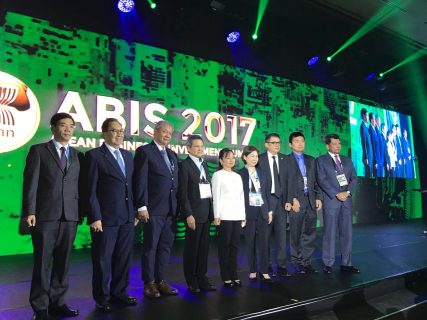
To the strong goes the victory
Arroyo acknowledged that some countries still lag behind in intra-ASEAN trade development.
“The community is biased in favor of some countries and against some other countries, and some states are benefitting more than others.”
They need the help of the rest of the community become strong, but that will require reforms and political governance and economic management.
“Regional integration benefits countries whose products are complementary to everyone else but they are biased to countries whose products compete with one another. Regional integration benefits countries who are efficient in production, marketing and governance, and who are able to use information technology efficiently and are biased against those who are less efficient,” Arroyo explained.
However, she said that overall, regional integration’s advantages outweigh the disadvantages it is better for all member states “to embrace regional integration while providing safety nets or special preferential treatments for the disadvantaged sectors and states.”
Arroyo said that the less efficient countries must “increase efficiency with better infrastructure, better governance that includes a strong and competitive fiscal system, monetary and political stability.”
Realizing ASEAN’s full potential
To realize the full potential of ASEAN as a major global economic force in the next 50 years, Arroyo cites that it needs to be fully integrated by 2025.
“We need to have broken down non-trade barriers for the free flow of goods and implement our mutual recognition agreements in order to bring down the barrier on the flow of labor,” she said.
In the next 50 years, “we will be in a position to benefit greatly from what we see as prosperity driven by technology, peace, and cleaner environment but also in a position to use our global leadership to reduce income disparity, prevent nuclear proliferation and prevent terrorism from expanding and mitigate climate change,” the former president concluded.


